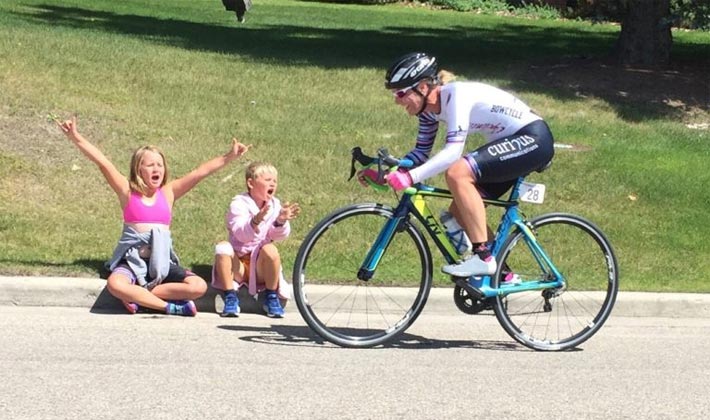
As cycling doesn’t require you to bear any weight on your feet, you may be surprised to learn that foot orthotics can make a significant difference to both your performance and comfort. How can foot orthotics help in a sport where your feet never touch the ground?
Our central nervous system does not clearly recognize our feet while cycling. When we walk and run the pressure on the band of muscle on the bottom of our feet sends feedback to our brain. However, when we cycle there is little or no change in the pressure on this band of muscle so our bodies are not keenly aware of the part of the body that is responsible for transmitting the power we produce to the bike.
Both over-the-counter or custom-made foot orthotics can solve this problem by creating some contact between the insole of your cycling shoe insole and the arch of your foot. The arch support, provided by the orthotic, helps give your central nervous system more complete or better-quality information about load, position in space or relationship to gravity of your body. This in turn enhances your ability to globally coordinate your actions. Today’s cycling shoes are designed to help you cycle further and faster but they also put significant force on a small, unstable area of your foot. This is why foot orthotics, specifically designed for cycling, can make a huge difference.
Orthotics that are designed for your cycling shoes can look and function differently to orthotics that are designed for weight bearing activities and may not be able to be transferred to other sports shoes. As cycling places stress on the forefoot, cycling orthotics typically have a very low hindfoot profile. Frequently made from supportive, yet light weight material, cycling orthotics are designed to distribute pressure over a wider area, support your arch and re-align your foot structure. A foot that overpronates because of an issue with the front part of the foot, will likely benefit greatly from custom made foot orthotics in a cycling shoe. In addition to making your foot more comfortable, your cycling orthotics will help re-align your lower limb mechanics and therefore maximize the power that is transferred through your feet to your pedals.
If you experience knee, arch or forefoot pain or foot numbness during or after your rides, consult a bike specialist to make sure your bike is properly adjusted to fit you. If your bike fits and you are still experiencing any of these symptoms, book an appointment with a Canadian Certified Pedorthist. Be sure to take your cycling shoes with you to the appointment. Your Pedorthist will assess your foot structure, biomechanics and cycling shoes and then recommend a treatment plan. If foot orthotics are recommended, your Pedorthist will design, manufacture and fit them so you can achieve maximum performance and comfort.
By Shannon Gordon, C. Ped (C), Calgary, Alberta
